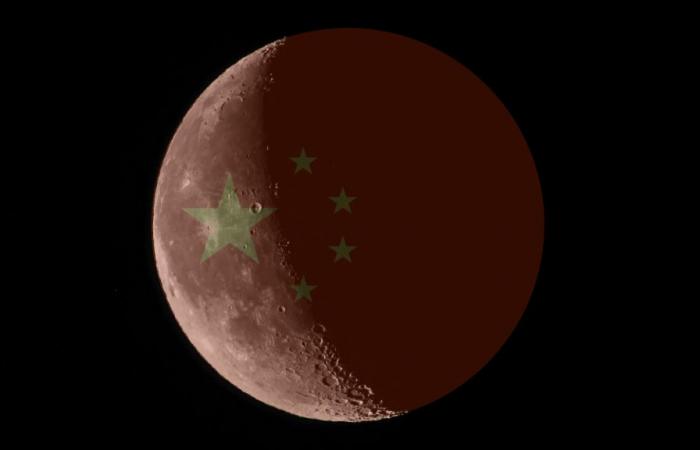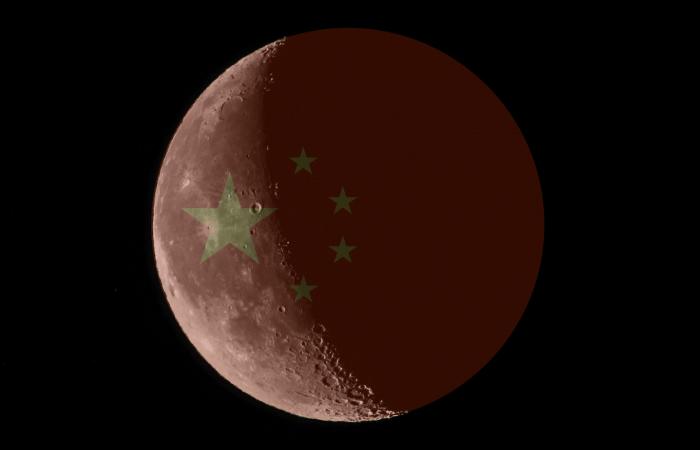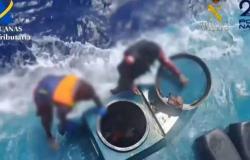
- China is the first country to bring back samples of the hidden side of the satellite.
- The mission lasted almost two months.
- Approximately 2 kg of rocks and soil were collected from the Polo-Aitken crater on the southern flank, one of the oldest and largest on the Moon
China has achieved a historic milestone in space exploration by bringing to Earth the first samples of the far side of the Moon. The Chang’e 6 probe successfully landed on Tuesday, June 25, in the Inner Mongolia region, after a mission of almost two months which included the harvest of rocks and lunar soil in the Polo-Aitken crater.
The capsule of Chang’e 6, which contained the valuable cargo, landed with a parachute in rural Siziwang Banner after being released into Earth orbit by the unmanned probe. The authorities confirm that the landing has been carried out “operating normally” and the mission is “a total success».
➡️ You may be interested in: The Moon as a stage of dispute in the new space race
The probe separated from orbit about 5 thousand kilometers from the South Atlantic. There, began its entry into the atmosphere at about 11.2 kilometers per second. 10 kilometers from reaching land, opened the parachute to be able to land as softly as possible. There, it was guarded by a specialized team Searching. This artifact will be taken to Beijing for inspectionThe samples will be taken to a group of scientists so they can store it, analyze it and study itexplained the China National Space Administration.
«The Chang’e-6 mission represents a significant milestone in the history of human lunar exploration, and will contribute to a more complete understanding of lunar evolution», confirmed Yang Wei, researcher at the Institute of Geology and Geophysics of the Chinese Academy of Sciences. «New samples will inevitably lead to new discoveries. Fascination with the moon has been ingrained in Chinese culture throughout the centuries, as evidenced by the mythological narrative of Chang’e, a lady who traveled and resided on the moon.. “Now, Chinese scientists are eagerly waiting for the opportunity to contribute to lunar science,” he added.
Experts praise this achievement by China, which opens a new era in lunar exploration. Scientists hope that analysis of these samples can reveal mysteries about the early history of the Moon and Earthas well as the Polo-Aitken crater date and the possible presence of fragments of the lunar mantle.
China achieves a milestone on the moon
This achievement makes China the only country that has managed to successfully land on the far side of the Moon and bring samples back to Earth. The mission, named after the Chinese lunar goddess Chang’e, started on May 3 from Hainan Province and landed on the far side of the Moon on June 2. Chang’6 was made up of a orbiter, a return module, a landing module and an ascending module. During the mission, she has gone through several phases such as Earth-Moon transfer, braking on the Moon, lunar orbit, breakup of the landing package, and attachment of the orbiter to the return module.
During the mission, the lander used a robotic arm and a drill to collect approximately 2 kg of rocks and soil from Polo-Aitken Crater, on the southern flank, one of the oldest and largest on the Moon. Later, the ascent module docked with orbiter before embarking on the journey back to Earth. During the mission, work was carried out sampling. On June 4 she took off from the Moon and on June 6 she met the return module, to which you sent the samples. Later, the The ascent module detached itself from the module and returned to the Moon to avoid creating space debris..
«Chang’e 6 is one of the most complex and challenging missions in China’s space exploration efforts to date. Composed of an orbiter, a return, a lander and an ascender, it was launched on May 3 this year. It has gone through various stages. “Earth-Moon transfer, near-Moon braking, lunar orbit, separation of the lander-ascendant combination and the orbiter-return combination,” confirms the Chinese news agency Xinhua.

“The Orbiter-returner combination spent 13 days in lunar orbit, waiting for the right opportunity to return to Earth. After completing two Moon-Earth transfer maneuvers and one orbital correction, the returner separated from the orbiter. Subsequently, delivered the samples to Earth», detailed Xinhua.
Quequao-2 satellite support
With the help of Queqiao 2 relay satellitethe combination of the lander and ascender They managed to land in the chosen area, at the South Pole-Aitken. After the mission, this satellite will now select the opportune moments to continue your scientific detection work on the moon. This Chinese-made device includes a ultraviolet camera extreme, a neutral atom imager and a system of Earth-Moon very long baseline interferometrythat select data of the Moon and space.
➡️ If you want to acquire knowledge about geopolitics and international analysis, we recommend the following training courses:
Article written by:
Ruben Asenjo Morillas. Journalist passionate about international news and geopolitics. He writes to understand the ever-changing world and share perspectives that spark reflection and debate. Committed to the search for truth and stories that impact and inspire.










